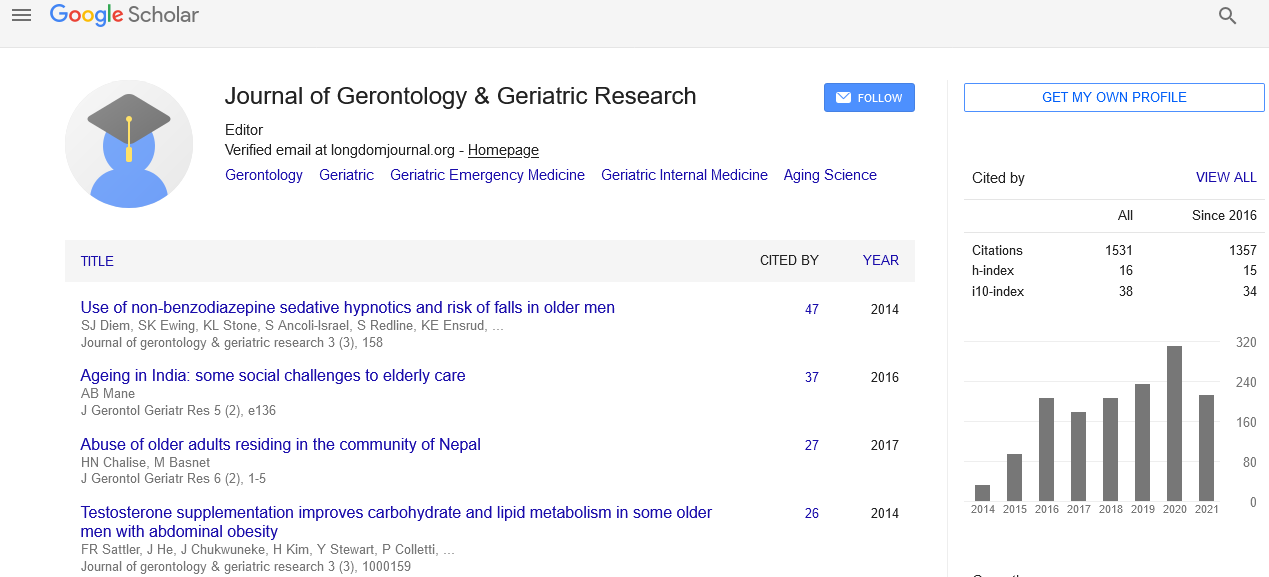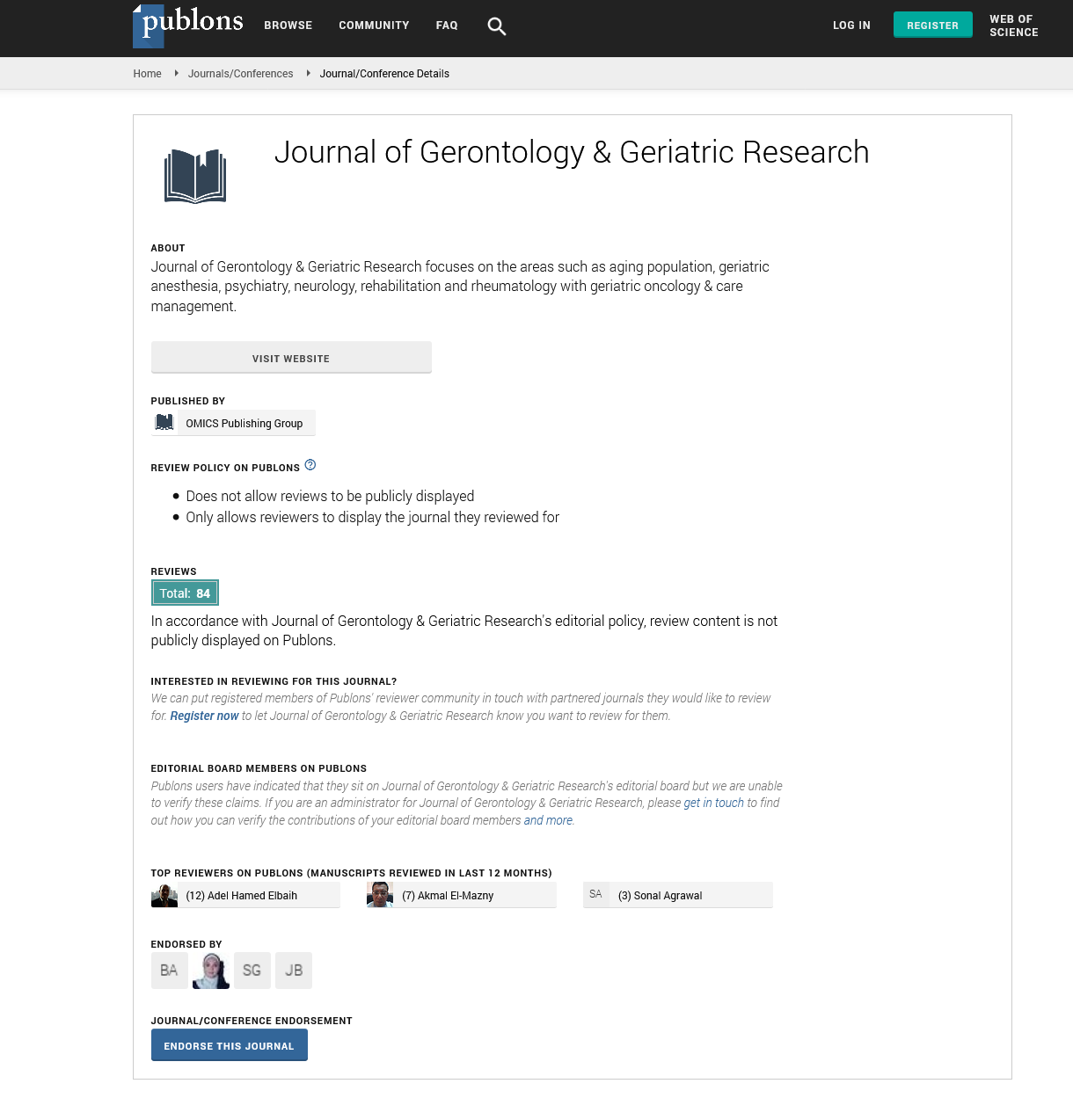PMC/PubMed Indexed Articles
Indexed In
- Open J Gate
- Genamics JournalSeek
- SafetyLit
- RefSeek
- Hamdard University
- EBSCO A-Z
- OCLC- WorldCat
- Publons
- Geneva Foundation for Medical Education and Research
- Euro Pub
- Google Scholar
Useful Links
Share This Page
Journal Flyer

Open Access Journals
- Agri and Aquaculture
- Biochemistry
- Bioinformatics & Systems Biology
- Business & Management
- Chemistry
- Clinical Sciences
- Engineering
- Food & Nutrition
- General Science
- Genetics & Molecular Biology
- Immunology & Microbiology
- Medical Sciences
- Neuroscience & Psychology
- Nursing & Health Care
- Pharmaceutical Sciences
ANALYSIS OF COSTS OF POLYPHARMACY IN THE ELDERLY
5th International Conference on Geriatric Medicine & Gerontological Nursing
November 14-15, 2016 | Atlanta, USA
Oscar Castaneda Sanchez
Mexican Social Security Institute, Mexico
Accepted Abstracts: J Gerontol Geriat Res
Abstract:
Introduction: Older adults are a growing population group in whom polypharmacy has become a geriatric syndrome associated with their fragility increases the frequency of adverse drug reactions and adverse events. Objective: To determine the costs of polypharmacy in the elderly in a unit of primary care. Material and Methods: A cross-sectional study was conducted at the Family Medicine Unit No. 1 Mexican Social Security Institute in Sonora. It includes not probabilistically recipes with five or more medications issued to older adults, reviewing the electronic record their clinical-diagnostic-therapeutic consistency, defined as the ‚??condition of the prescribed medication, quantity, dosage and frequency of administration is consistent with the diagnosis and the clinic that the patient at the time of the query‚?Ě. Additional costs against rational prescribing or selecting the right medicine in the right dose, right route and right amount are estimated for cost analysis. In the analysis of results frequencies and proportions, measures of central tendency and dispersion and one-way ANOVA with custom contrasts were used. Results: 243 patients were included 70% women, 30% men with an average age of 72 +/- 5.6 years. The three main diagnoses for prescription were: hypertension 45.6%, diabetes mellitus in 28.3% and 11.5% heart disease. The number of drugs prescribed on average per patient was 8.1 +/- 1.8. With a therapeutic-diagnostic-clinical consistency in 22.2% of cases, percentage by which the number of prescribed drugs was 7.4 +/- 1.6. The total investment was $ 244.50, with a cost of $ 200.25 against spending (not justified drugs) $ 44.25, significant relationship (p <0.05). Conclusions: According to the results the expenses outweigh the costs i.e., they prescribed a significant number of drugs are not justified in the elderly, increasing not only the costs of the health system, but also patient costs, coupled with the risk of adverse events and impact on their quality of life.


